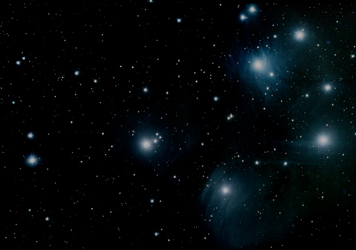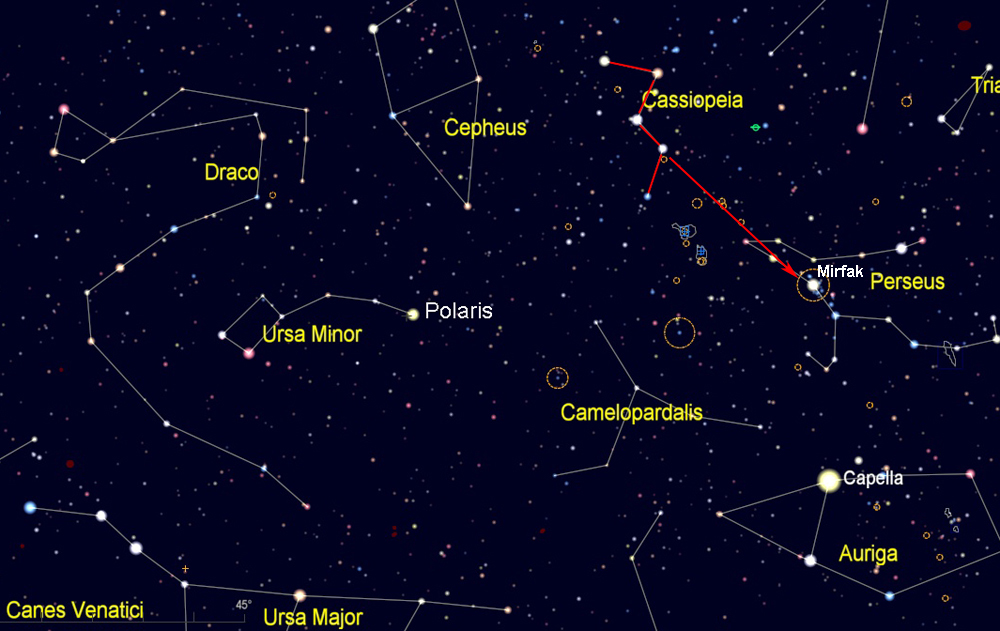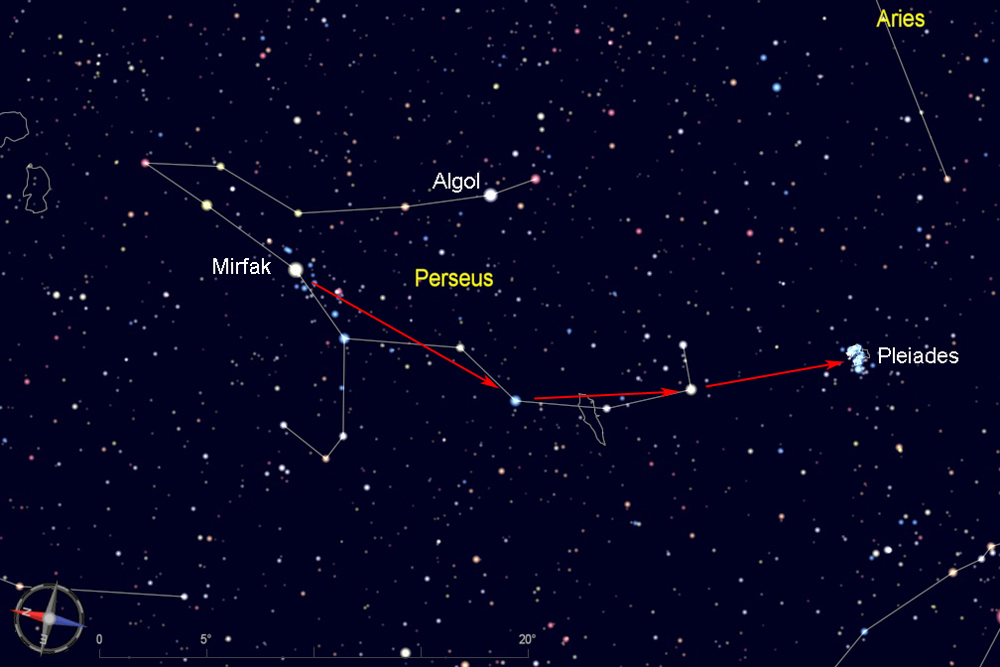
Find the constellation Cassiopeia, which has a distinctive "W" shape (although its orientation changes at different times of year as it circles the north celestial pole). On fall evenings, look for Cassiopeia in the northeast, where its tilt makes it look like a "3", and in the winter look high in the north above Polaris, where it is oriented like an "M".
As shown below, use the stars of Cassiopeia to direct you to the nearby constellation Perseus, and its brightest star, Mirfak.

The stars of Perseus are fairly bright. The shape I see is some sort of animal with a curved tail. Follow the curving chain of stars that form the back leg of Perseus (whether you see the figure as man or beast), and they will point you to the Pleiades. If Perseus is low on the northeast horizon, it will be another hour or two before the Pleiades rise.
